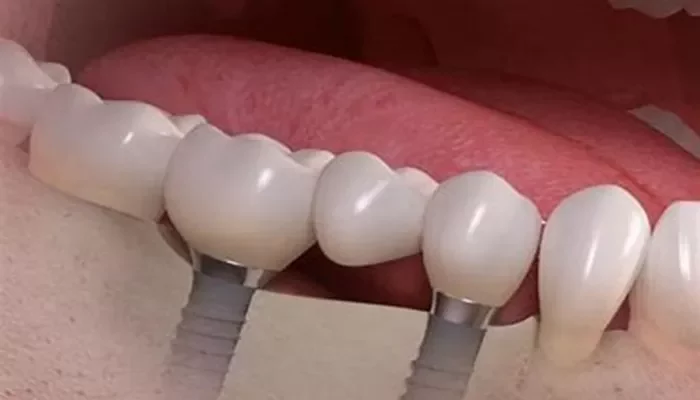Dental health is an essential aspect of overall well-being, and dental implants have become a popular solution for replacing missing teeth. However, certain conditions, such as insufficient bone density in the upper jaw, may require additional procedures like a maxillary sinus lift. This essay will explore what dental implants are, the purpose of a maxillary sinus lift, and the process involved in these procedures.
What Are Dental Implants?
Dental implants are artificial tooth roots made from biocompatible materials, usually titanium. They are surgically placed into the jawbone to support replacement teeth, known as crowns. Implants provide a strong foundation for fixed or removable replacement teeth that are designed to blend with natural teeth.
The Importance of Dental Implants
Dental implants offer numerous benefits, including:
Improved Aesthetics: They look and feel like natural teeth, enhancing a person’s smile.
Functionality: Implants restore chewing ability, allowing individuals to eat a variety of foods without discomfort.
Bone Preservation: By stimulating the jawbone, implants help prevent bone loss that often occurs after tooth loss.
Durability: With proper care, dental implants can last many years, often a lifetime.
Why Is Bone Density Important for Dental Implants?
For dental implants to be successful, they require adequate bone density to support them. The jawbone must be strong and thick enough to hold the implant securely. If there is insufficient bone, the implant may fail. This situation is common in the upper jaw, particularly in the area of the molars, where the bone is often thinner and can be affected by sinus cavities.
What Is a Maxillary Sinus Lift?
A maxillary sinus lift, also known as a sinus augmentation, is a surgical procedure that increases the amount of bone in the upper jaw in the area of the molars and premolars. It is performed to create a stable foundation for dental implants when there is insufficient bone height due to:
Sinus Expansion: The maxillary sinus can expand into the jawbone over time, especially after tooth loss.
Bone Resorption: After losing teeth, the jawbone can shrink, leading to insufficient bone for implants.
The Anatomy of the Maxillary Sinus
The maxillary sinus is one of the four pairs of paranasal sinuses located in the skull. They are air-filled spaces that help with voice resonance and reduce the weight of the skull. The maxillary sinuses are located above the upper teeth, making them relevant in dental procedures.
The Maxillary Sinus Lift Procedure
Preoperative Assessment
Before a sinus lift, a thorough evaluation is conducted, including:
Medical History Review: Understanding the patient’s overall health and any underlying conditions.
Imaging Studies: X-rays or 3D imaging (CBCT) are used to assess bone density and the position of the sinuses.
Surgical Steps
Anesthesia: The procedure begins with the administration of local anesthesia or sedation to ensure the patient is comfortable.
Incision: The dentist makes an incision in the gum tissue to expose the bone in the upper jaw.
Accessing the Maxillary Sinus: A small window is created in the bone to access the sinus membrane.
Lifting the Sinus Membrane: The sinus membrane is carefully lifted away from the jawbone. This step is crucial as it prevents damage to the membrane.
Bone Grafting: Once the membrane is lifted, bone graft material is placed in the space created. This material can be sourced from the patient (autograft), a donor (allograft), or synthetic materials.
Closure: The incision is then closed with sutures, and the area is allowed to heal.
Recovery and Healing
After the procedure, patients may experience swelling and discomfort. Pain management strategies, including over-the-counter medications, are typically recommended. Healing time can vary, but the bone graft usually takes several months to integrate with the existing bone before dental implants can be placed.
Risks and Complications
While a maxillary sinus lift is generally safe, some risks include:
Infection: Any surgical procedure carries a risk of infection.
Sinus Membrane Perforation: If the membrane is accidentally punctured, it may require additional treatment.
Graft Failure: Sometimes, the bone graft may not integrate properly, necessitating further procedures.
Conclusion
Dental implants have revolutionized restorative dentistry, providing a reliable solution for missing teeth. However, for patients with insufficient bone density in the upper jaw, a maxillary sinus lift may be necessary to ensure the success of the implant. Understanding the procedures involved, the importance of bone density, and the potential risks can help patients make informed decisions about their dental health. With advancements in dental technology and techniques, more individuals can enjoy the benefits of dental implants, leading to improved quality of life and confidence in their smiles.
In summary, the combination of dental implants and maxillary sinus lifts represents a significant advancement in dental restoration, allowing for effective solutions to complex dental issues. As techniques continue to evolve, these procedures will become even more accessible and successful for those in need.
Related topics:

